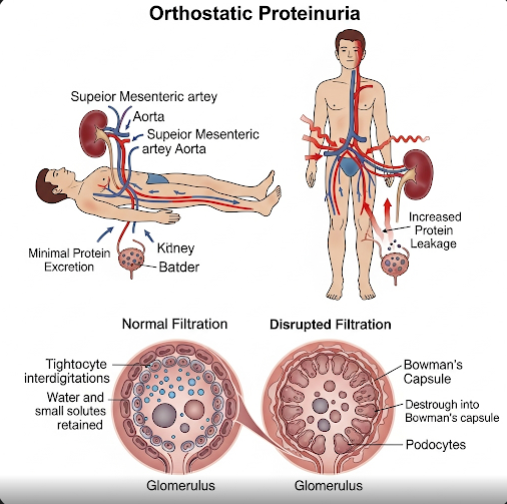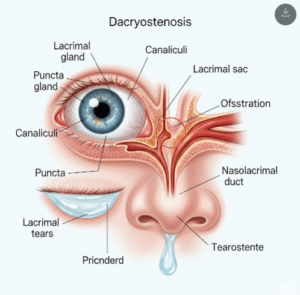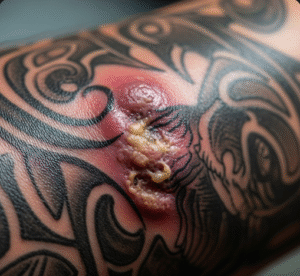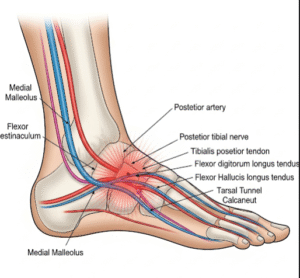Overview
Orthostatic proteinuria is a benign condition characterized by the presence of protein in the urine when a person is upright or active, but not when lying down. It is most commonly seen in children and young adults and is considered a harmless variant of proteinuria. Unlike other forms of proteinuria, orthostatic proteinuria does not indicate kidney disease and usually requires no treatment.
What is Orthostatic Proteinuria?
Orthostatic proteinuria refers to the abnormal excretion of protein in the urine that occurs during daytime activity or standing, and disappears after a period of rest or lying down. It is diagnosed by comparing urine protein levels collected during the day versus overnight. The exact cause is unclear but is thought to involve changes in kidney blood flow or pressure when standing.
Symptoms
- Typically, there are no symptoms directly caused by orthostatic proteinuria.
- Occasionally, mild urinary changes might be noticed during medical tests.
- It is usually discovered incidentally during routine urine screening.
- No associated swelling, pain, or signs of kidney dysfunction.
Causes
The exact cause is not well understood but may include:
- Increased pressure in the kidneys when standing
- Temporary changes in kidney filtration function due to posture
- Possible mild compression of renal veins during upright posture
- Normal physiological variation in young individuals
Risk Factors
- Age (most common in adolescents and young adults)
- Being physically active or spending prolonged periods standing
- No association with systemic diseases or kidney damage
- No known genetic predisposition
Complications
- Orthostatic proteinuria is generally benign and does not cause kidney damage.
- It does not progress to chronic kidney disease.
- No significant health risks are associated.
- However, it may cause concern or lead to unnecessary testing if misinterpreted.
Prevention
- No specific prevention is required due to the benign nature of the condition.
- Routine monitoring may be recommended to differentiate from other proteinuria causes.
- Maintaining good hydration and general health is advisable.
Treatment Option in Korea
In South Korea, diagnosis and management of orthostatic proteinuria involve:
- Detailed urine testing, including split-day urine collections
- Kidney function tests to rule out other causes
- Regular follow-up to ensure the condition remains benign
- Patient education to alleviate concerns about proteinuria
- Referral to nephrology specialists at centers like Severance Hospital, Samsung Medical Center, and Asan Medical Center for comprehensive evaluation if needed
Korean hospitals emphasize accurate diagnosis to prevent unnecessary interventions and provide reassurance to patients with this condition.













